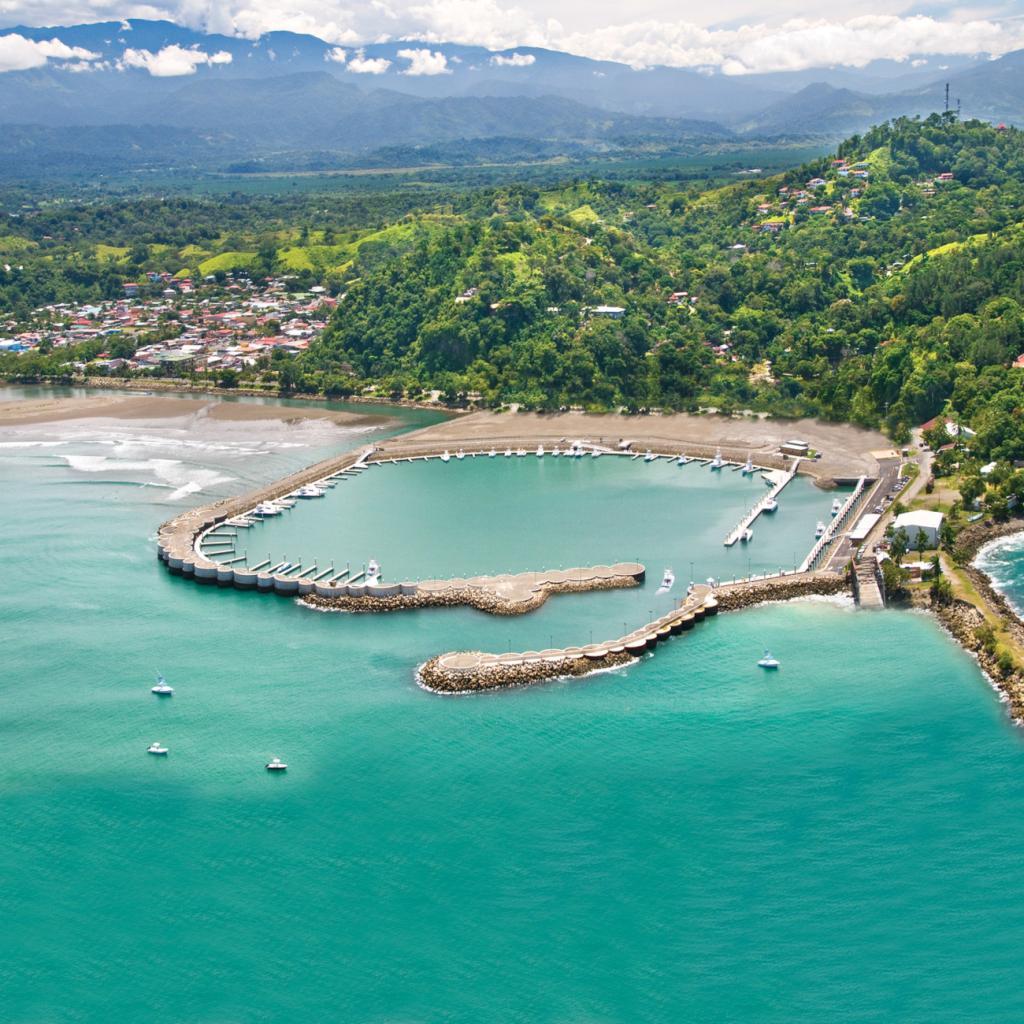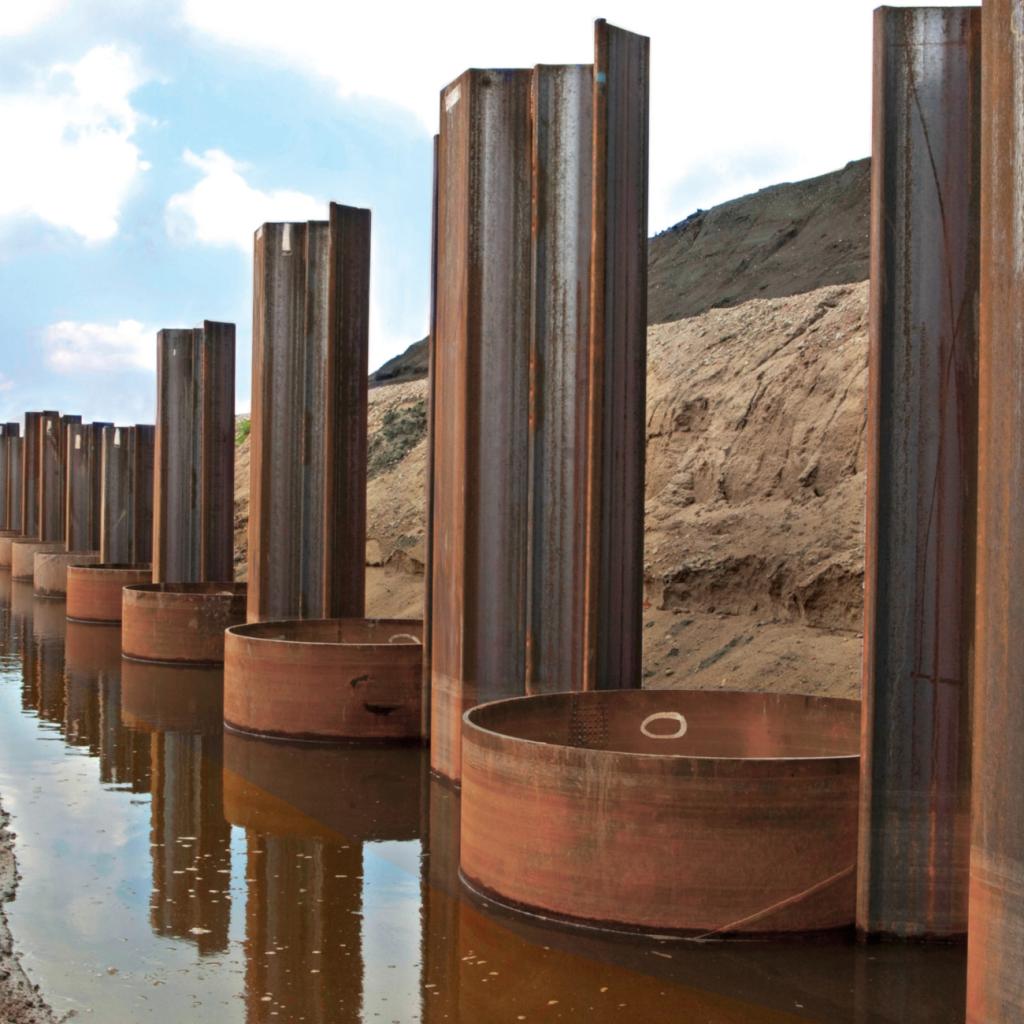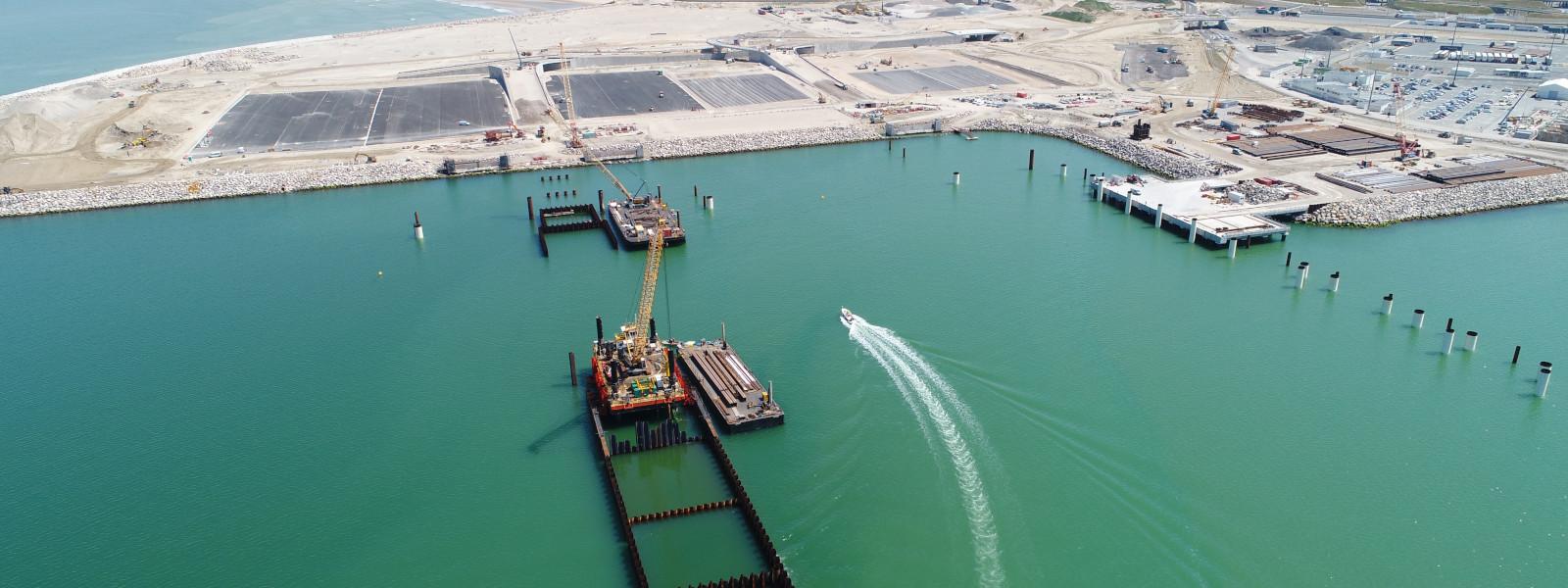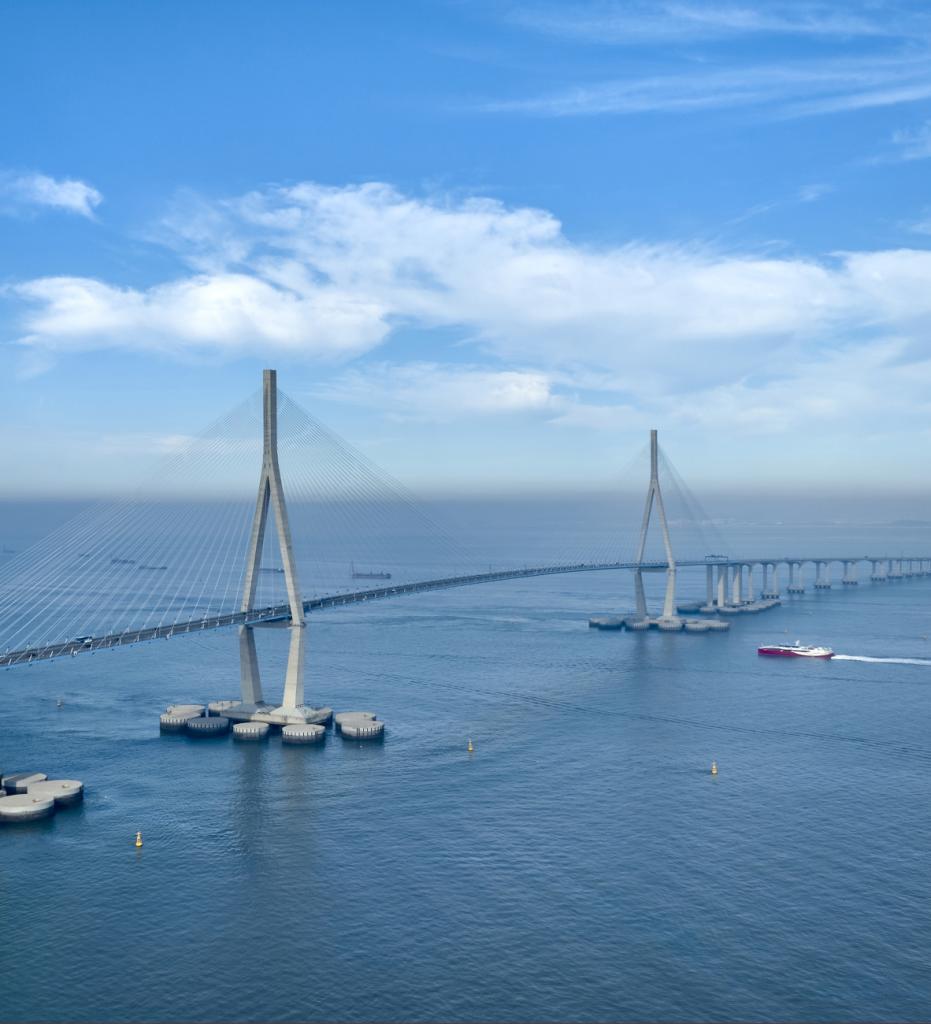Quay walls
Hot rolled steel sheet pile sections have been used to build quay walls for almost a century. One of the first documented examples was located in the port of Rotterdam (Dokhaven, 1927), whose designers opted for the innovative approach of a steel sheet piling quay wall, to reduce the high cost that the more traditional solutions of concrete caissons implied.
Quay walls are usually earth retaining structures at which ships can berth. They can be located on the sea, a lake or a river, inside a harbour or a canal, and are equipped with the necessary superstructure (bollards, fenders, cranes, etc.) to allow the common operations of transshipment of goods.
Due to the intrinsic benefits of maritime transport, which has been continuously growing over the last decades and is forecasted to keep rising, port authorities have no other alternative than expanding and upgrading their facilities. The design and construction of new quay walls to accommodate larger and larger container vessels turns into a never-ending challenge.
ArcelorMittal’s range of hot rolled steel sheet piling products allows the design and construction of tailor-made solutions adapted to any situation.

Location
- soil conditions,
- sea water (high tide, low tide, etc) & groundwater levels,
- wave conditions,
- seismic conditions.
Service conditions
- service life (durability),
- size of ships that will berth (draught),
- loads (storage areas, cranes, bollards, fender, etc.),
- specific requirements from the final user, port authority, etc.
Combined wall solutions
The race to build larger vessels, increase of the depth of major ports, and consequently the need for more heavy-load berthing facilities compelled steel manufacturers to develop innovative solutions, such as the combined wall system.
Conventional steel sheet piles walls were replaced with combined walls which consist of two complementary elements: a primary stiff element (king pile, for instance an HZ®-M sheet pile, a steel tube or a box pile) and a secondary flexible element (intermediary sheet pile, predominantly AZ® sections).
The result is an overall safe and cost-effective high capacity retaining structure, with a high stiffness and high bending moment capacity.


The entire quay structure must be able to satisfy numerous requirements imposed by:
Standard steel sheet piles (AZ and U-type sections)
Standard sheet pile walls are used in quay walls with small to medium-size draughts. They have been used all over the world to build reliable structures in commercial ports and marinas.
Mostly AZ sheet piles are used in maritime structures, because they are more cost-effective than U-piles (better ratio section modulus / mass), and in a comparable environment, their section properties are less affected by corrosion (loss of steel thickness).
The development of more corrosion resistant steel grades, such as AMLoCor®, of steels with higher yield strength, as well as new shapes with higher elastic section modulus, contributed significantly to the increase of steel solutions in marine applications in the last decades.

Case study
Erstatningshavn Færgehavn Nord. Port of Copenhagen Denmark





